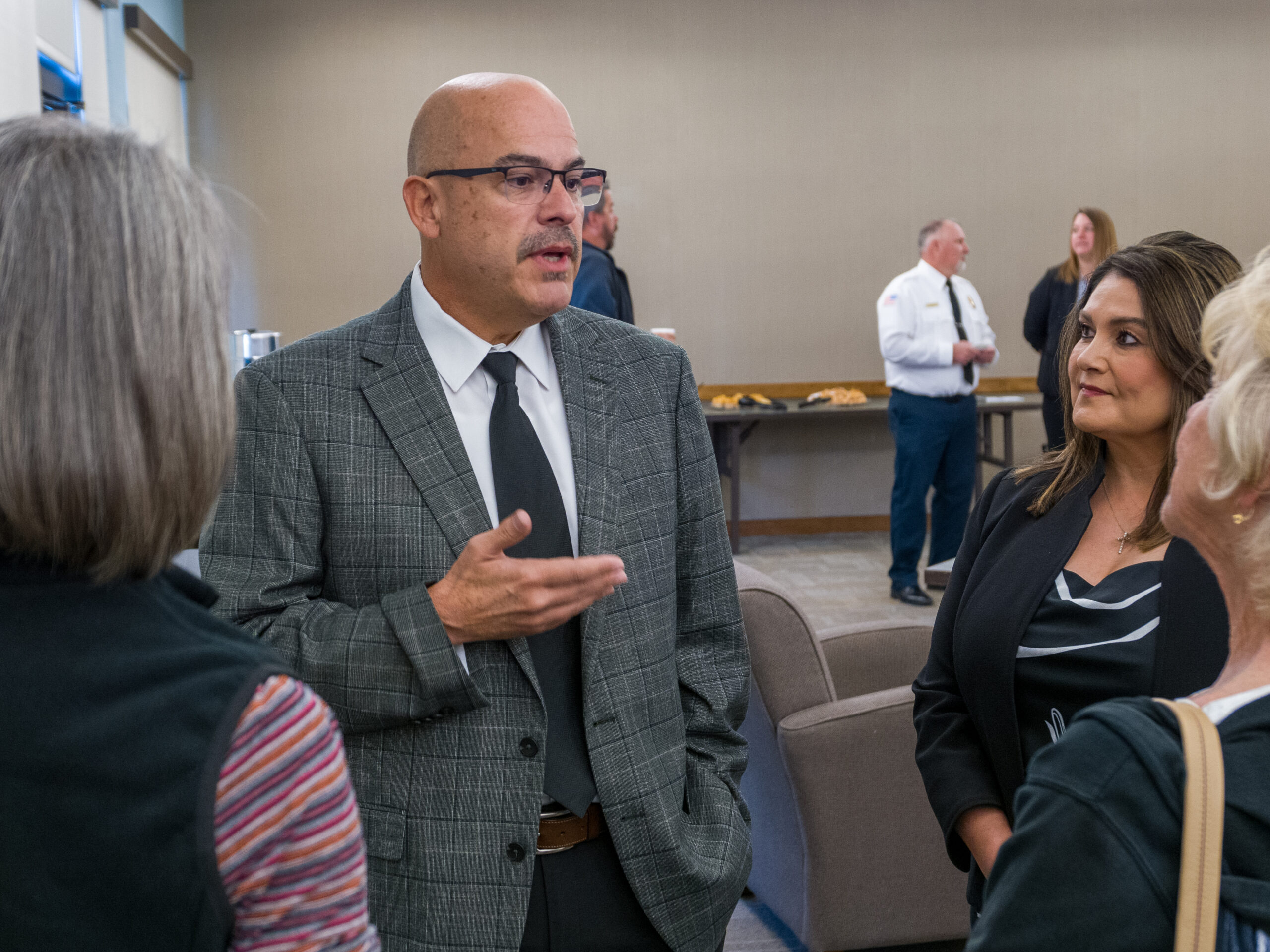The Verde Valley Archaeology Center hosted a presentation on Hopi textiles by weaver Ahkima Honyumptewa on Saturday, May 20.
Honyumptewa, of the Rattlesnake clan from the village of Paaqavi, is a weaver, painter, farmer and architect. He started weaving in 2007 when he was offered a spot in a class at the Paaqavi Community Center and quickly picked up the craft.
“Most of the weavings I do were no longer being made, somewhat lost because of laziness and people not sharing the techniques,” Honyumptewa said in a press release. “I, on the other hand, want to share the techniques and help any Hopi develop these skills to better oneself and our culture … I weave everything Hopi has to offer.”
The first thing Honyumptewa learned to weave was a ceremonial Hopi kilt worn by men, followed by a belt and a sash, the latter of which uses a pattern that represents spiritual development. He can now make any Hopi textile. In Hopi culture, only the men weave.

Honyumptewa said that weaving came naturally to him. He started weaving on his own following the class, trying out dresses, shawls and shirts, all things that are in short supply. The shawls are worn by women during weddings or ceremonies such as the basket dance.
He also makes blankets and cloaks. One style of cloak is intended to ward off evil and is worn during ceremonies. The cloak took him about two weeks to make and features both diamond twill and diagonal twill patterns.
Honyumptewa has an upcoming show in Japan, where he has built relationships with a number of Japanese friends. He has also shared his knowledge of textiles in exhibitions in Mexico while learning Mexican styles of weaving. Honyumptewa claimed that all ancient cultures have textiles and that people are supposed to be wearing handmade clothing.
Honyumptewa recalled a childhood memory of someone asking him what he wanted to be when he grew up.
“There was only one thing I wanted to be and that was Hopi,” Honyumptewa said.
In addition to his interest in weaving, Honyumptewa is also a farmer who uses the traditional dry farming method without irrigation. The Hopi rely solely on ceremonies to provide water to their crops. If the ceremony is done correctly, it will bring rain or snow; if done incorrectly, no rain will fall and drought will follow. As the anthropologist Ruth Benedict outlined, a Hopi rainmaking ceremony is not a form of prayer, but rather a purely mechanical action believed to have inevitable causal results if properly executed.
Honyumptewa said that the main purpose of all Hopi ceremonies is to grow food, with many having to do with the growth of corn, and these ceremonies are thereby necessary to reach the next step in life. He described plants as children and the farmer as a parent who must care for them until they can be self-sustaining.
According to Honyumptewa’s beliefs, humans have four strong connections in their existence, among people, land, marriage and mother and child. An elder once told him that you can tell if someone is a good parent by how they take care of a field.
Honyumptewa is currently replicating an ancestral Hopi textile from the museum’s Dyck Cliff Dwelling Collection, which was on exhibit until removed for conservation. His replica will be displayed in place of the original once completed. The textile shows Hopi maidens climbing a reed into the fourth world from the inner world. The women it depicts are wearing hair whorls, called squash blossoms, that young unmarried women traditionally wore to signify their readiness for marriage.
Honyumptewa said that the Hopi should never wear their hair loose except during ceremonies, otherwise keeping it in braids for married women and buns for men.



